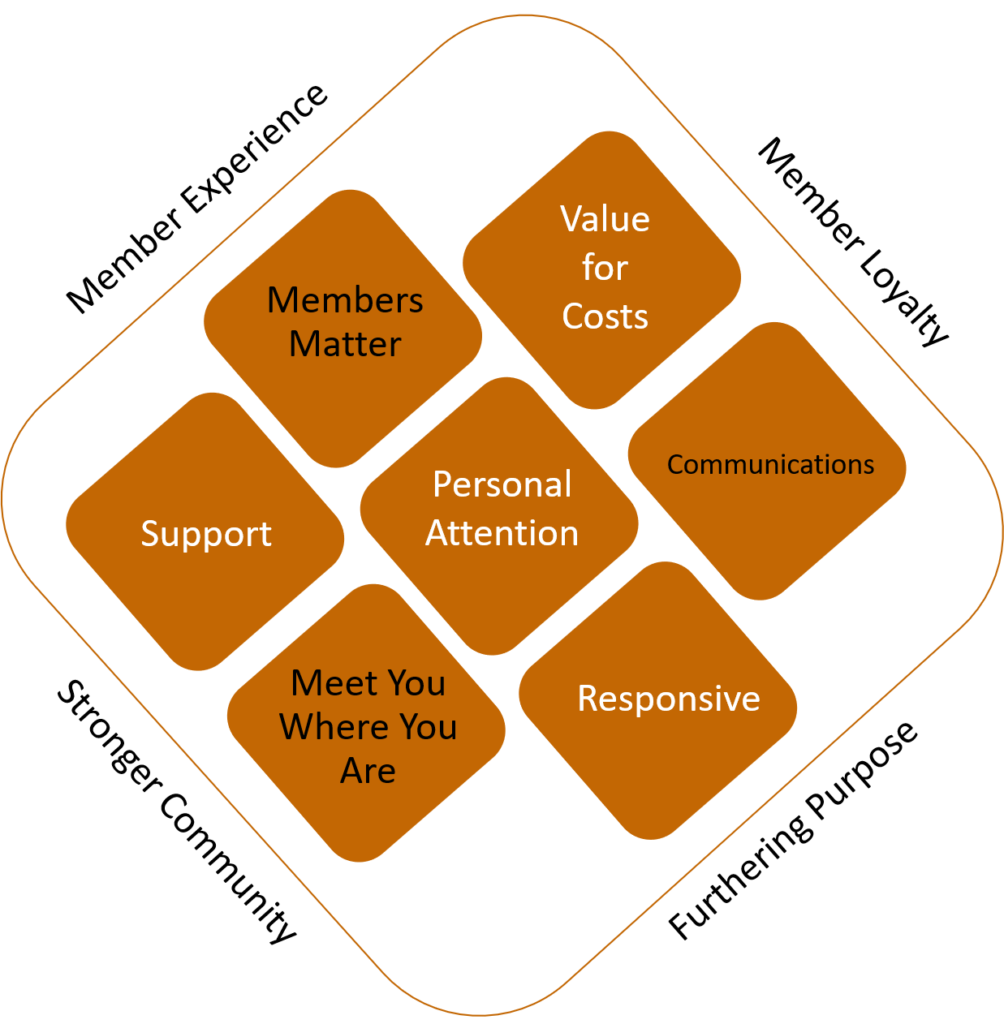7 Questions About Your Member Experience
- Nov 23, 2020
- Kathy Edersheim
- 10 min. reading
When you are interested in joining a community or increasing your level of involvement, you want to make sure that it is the right place for you. For all kinds of groups whether brand-based, alumni oriented, cause-driven, sports-based, or something else, if it is has members, it should be providing a positive membership experience. Using these seven questions, you can get an overview to help you decide whether to become an active member.
1. Is the Value of Membership Greater than the Cost?
When you are part of an organization, you expect to have costs such as dues, and you want and expect to get something for the costs. You want to feel that there is a good return on investment (ROI) for you. So, you need to consider the costs and the benefits of membership.
It is generally straightforward to calculate the financial cost of membership - what are the dues, expected contribution, and/or obligatory expenses for membership at the level you are considering? Depending on the type of organization, there might be a time commitment as well.
Now consider the benefits of membership which can range from discount coupons to access to a network to learning to making a child’s life better. Broadly speaking benefits can include experiential (enjoyment, learning, friendships) and/or material benefits (tote bag, t-shirt, discounts, etc.) as well as a contribution to a charitable cause.

Is the sum of the benefits greater than the costs? If so, do you believe that others agree? You want the answer to be yes for both questions, so the organization is sustainable as well as appealing for you in the moment. Make sure to consider if there is a start-up membership that may be “extra” value which could mean that you and others only join for a month or a year rather than a longer term commitment to the concept. Note that if there is a contribution component, it should be at or below the amount you would like to give the cause. You can always choose to do more, and it is highly likely that you will be asked to do so.
2. Do Members Matter?
An organization that has members with shared purpose must be about the members and achieving the purpose, not about the organization. Structure, communications, and engagement must focus on the members. When you participate in an event or receive an update about the organization, it should be about the members (you!) or the purpose through a success story, announcement of enhanced member benefit (such as new gym equipment for member use,) or furthering the cause.
How do you know when there is a problem? If you receive inward looking communications that talk about new hires or what the CEO did last week, it suggests that management is more focused on themselves than the purpose or the members. When an event starts with an update about operations or celebrates the team rather than achievements or a member, there might be trouble ahead. Gary Toyn aptly described these types of entities as narcissistic organizations in How to Scare Away Member Loyalty and Engagement in 10 Easy Steps. Even if it does not bother you, consider providing feedback for the sake of the long-term well-being of the entity. Note that if you are on the Board of an organization, these types of communications and events may be reasonable.
3. Is there Enough (Good) Communication?
This is really two basic questions:
- What does the organization say and share?
- How often do you hear from the entity?
The mode of communications is likely to be email, the easiest, most cost effective and most popular media for now, with a bit of mail and a lot of posting/sharing on social media.

Considering the question of content, the emails should be informative, interesting, and visually appealing. Emails need good content and a call to action. They should “look” like the organization to keep the brand top of mind and have a variety of content. The same is truer for actual pieces of paper because they are costly to produce and send and you want your entity to be spending money wisely. You should care about at least 50% or more of topics being discussed across all the media recognizing that communications are intended to appeal to the breadth of the membership. If the content is not interesting, either there should be a different writer, or you do not have a sufficient shared interest to remain with the group.
The next question is how often do you hear from the entity? The answer depends on the nature of the organization and the community. Keep in mind that corporate and other entities often email 2 – 3 times a week or even daily. It must feel right for you as the member. If you open at least 75% of the correspondence, you are very dedicated, and they are doing a great job. If you open 50 – 75% of the correspondence, you are a dedicated member. If you open less than 25% of the correspondence, there is over communication, they need a new writer, or you do not have sufficient interest to remain with the group.
4. Is it Personal?
The most appealing sound for a person is their own name. We all want to be recognized, known, and heard especially within our community. When you are part of a small organization, you expect to have meetings and calls to feel connected directly. As an organization grows, communications must be by email or letter, but they must remain personal.
You should receive communications addressed to you by name and centered around topics that interest you. Personalized communications show that the organization is well-managed and recognizes that you have specific interests. If you are curious, ask management what system(s) they use to make it happen.
5. Do they Meet You where You Are?
During the pandemic, we spend so much time at home in front of a screen. Your communities must be there too and most of them are – producing webinars and virtual events as well as emails. But it is about your mental place as well as the physical availability, so you need to consider the content as well as the medium. You have a lot of options with all the virtual content and functionality being offered by so many.
Ask what the entity is offering members in terms of content (webinars, communications, resources) and functionality from social interaction to learning to payment methods. It must be on-line and easy. It should also be functional on mobile devices. Depending on your preferences and sensitivities, webinars should be topical and interactive, the website should be well-designed to minimize clicks, and there should be an on-line payment system to collect donations and dues.
6. Is the Organization Responsive?
When you are part of an organization, you want to participate and, perhaps, be heard. You might want to contribute to a conversation, ask for something, or make a suggestion. Every organization should listen to its members, react, and respond. Find out if the team is responsive so that when you speak, email, or write, somebody (whether a volunteer, other member, or team member) responds and reacts.
7. Is the Organization Supportive?
When you join a group, you have expectations that you will receive support for what you are trying to accomplish whether becoming a better athlete, finding new friends, or learning. Communities are intended to be mutually supportive for the members. The entity should foster a culture that provides support to members within the purpose of the organization from other members and/or from the team.
Summary
Here is a visual summary of what you should expect as a member:

